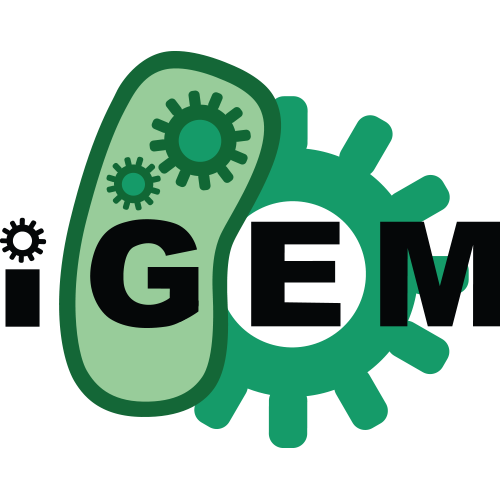Source:
Generated By: https://synbiohub.org/public/igem/igem2sbol/1
Created by: Daniel Camsund
Date created: 2012-02-02 12:00:00
Date modified: 2015-08-31 04:08:32
Broad-host-range shuttle vector pPMQAK1
| Types | DnaRegion |
| Roles | Plasmid_Backbone plasmid_vector |
| Sequences | BBa_J153000_sequence (Version 1) |
Description
The broad-host-range shuttle vector pPMQAK1 is a BioBrick-compatible plasmid that provides ampicillin and kanamycin/neomycin resistance (Genbank GU933126).As pPMQAK1 contains part of the pSB1AK3 plasmid it contains the same flanking terminators, and it is possible to use the VF2 (BBa_G00100) and VR (BBa_G00101) primers for colony PCR and sequencing.
It was originally developed to allow for the use of BioBrick constructs in cyanobacteria (Huang etal 2010). But because of its RSF1010-derived broad-host-range replicon, it is expected to replicate successfully in most gram negative bacteria (Meyer 2009).
Plasmids with a RSF1010-derived replicon, which belong to the IncQ group, have been found to have a copy number of 10 in Escherichia coli (Frey and Bagdasarian 1989), and from 10 (Marraccini etal 1993) to 30 (Ng etal 2000) per cell in the cyanobacterium Synechocystis sp. PCC 6803.
Practical notes
pPMQAK1 can be transformed into competent E. coli as preferred, but appears to give a lower number of transformants as compared to other cloning vectors (such as the pSB1***-series). The relatively low copy number also means that plasmid prep yields will be low. Further, it is often difficult to completely digest all plasmid, as judged by agarose gel electrophoresis.
Conjugation (triparental mating) can be used to transfer pPMQAK1 into cyanobacteria as it carries the required mobilization genes and an oriT (origin of transfer, or bom-site) that enable conjugative transfer with the help of an additional conjugal plasmid. More info about engineering cyanobacteria, conjugation and detailed protocols can be found in the dedicated Methods in Enzymology chapter (Heidorn etal 2011).
References
Frey,J. and Bagdasarian,M. (1989) The molecular biology of IncQ plasmids. In Thomas,C.M. (ed.), Promiscuous Plasmids of Gram-negative Bacteria. Academic Press, London, pp. 79???94.
Heidorn, T., Camsund, D., Huang, H.H., Lindberg, P., Oliveira, P., Stensjo, K. and Lindblad, P. Synthetic biology in cyanobacteria engineering and analyzing novel functions. Methods Enzymol, 497, 539-579.
Huang, H.H., Camsund, D., Lindblad, P. and Heidorn, T. (2010) Design and characterization of molecular tools for a Synthetic Biology approach towards developing cyanobacterial biotechnology. Nucleic Acids Res, 38, 2577-2593.
Marraccini, P., Bulteau, S., Cassier-Chauvat, C., Mermet-Bouvier, P. and Chauvat, F. (1993) A conjugative plasmid vector for promoter analysis in several cyanobacteria of the genera Synechococcus and Synechocystis. Plant Mol Biol, 23, 905-909.
Meyer, R. (2009) Replication and conjugative mobilization of broad host-range IncQ plasmids. Plasmid, 62, 57-70.
Ng, W.O., Zentella, R., Wang, Y., Taylor, J.S. and Pakrasi, H.B. (2000) PhrA, the major photoreactivating factor in the cyanobacterium Synechocystis sp. strain PCC 6803 codes for a cyclobutane-pyrimidine-dimer-specific DNA photolyase. Arch Microbiol, 173, 412-417.
Notes
As cloning by plasmid preparation and subsequent digestion/ligation was problematic due to low copy number and difficulties in digesting the RSF1010-derived part from pAWG1.1, pPMQAK1 was made using PCR and subsequent digestion/ligation.Source
pPMQAK1 was constructed by ligating a PCR product from the pAWG1.1 plasmid, corresponding to the RSF1010 replicon, with a PCR product from the pSB1AK3 plasmid, corresponding to the BioBrick cloning site with flanking functional sequences plus the ampicillin and kanamycin resistance cassettes.| Sequence Annotation | Location | Component / Role(s) |
| Suffix Terminator VR (BBa_G00101) oriV mobC mobA mobB repB unknown protein E (predicted) repressor protein F (predicted) repA repC kanR ampR VF2 (BBa_G00100) Terminator Prefix | 1,21 30,62 155,174 265,655 682,966 1165,3294 1913,2326 2323,3294 3355,3567 3569,3775 3805,4644 4631,5482 5605,6420 6575,7435 7557,7577 7647,7666 7676,7697 | feature/misc sequence_feature feature/stem_loop stem_loop feature/primer_binding primer_binding_site sequence_feature feature/misc feature/protein CDS feature/protein CDS CDS feature/protein feature/protein CDS sequence_feature feature/misc feature/misc sequence_feature feature/protein CDS CDS feature/protein feature/protein CDS feature/protein CDS feature/primer_binding primer_binding_site stem_loop feature/stem_loop sequence_feature feature/misc |
